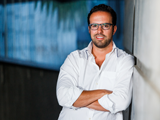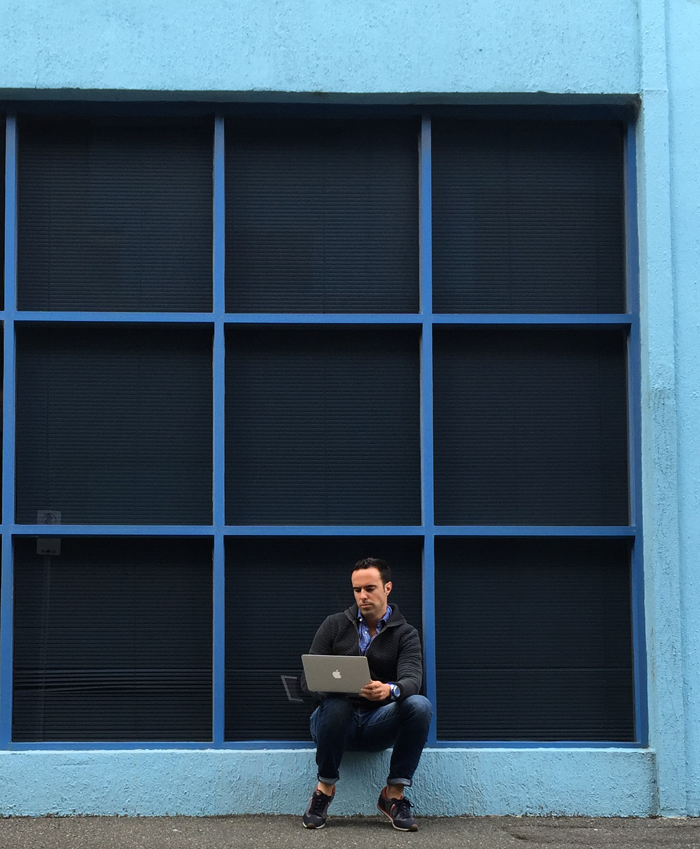Interview with Dr. Manuel Cebrián. He is Senior Scientist with NICTA in Melbourne, Australia, where he directs the Human Dynamics research group.
-
To begin this interview, we are curious about how you were called to the life of science. When and why did you decide to become a scientist?
 As a kid I always loved writing mystery tales, I wanted to be the next H. P. Lovecraft. I recited my writings in class to my teachers, over dinner to my parents, as well as telling them to my friends late at night by candlelight (ghost stories were my specialty). I gradually realized that the stories that captivated people the most — whether that was in newspapers or TV — were scientific ones: the first landing on the moon, the “Big Bang” theory for the origin of the universe, how dinosaurs inhabited the earth, the formation of continents, how AIDS was transmitted, etc. The way nature operated seemed to be so mysterious that when the truth was finally discovered it made the best story. I believe that my childish passion for finding the best narratives drove me to become a scientist: I wanted to discover things to have the best mystery reveal!
As a kid I always loved writing mystery tales, I wanted to be the next H. P. Lovecraft. I recited my writings in class to my teachers, over dinner to my parents, as well as telling them to my friends late at night by candlelight (ghost stories were my specialty). I gradually realized that the stories that captivated people the most — whether that was in newspapers or TV — were scientific ones: the first landing on the moon, the “Big Bang” theory for the origin of the universe, how dinosaurs inhabited the earth, the formation of continents, how AIDS was transmitted, etc. The way nature operated seemed to be so mysterious that when the truth was finally discovered it made the best story. I believe that my childish passion for finding the best narratives drove me to become a scientist: I wanted to discover things to have the best mystery reveal!
-
What training and background do you have as a researcher? What institutions have you worked with up until now?
My background is in Computer Science, with a special emphasis on Information Theory and Complex Systems. I was trained by Prof. Manuel Alfonseca — my PhD Supervisor at Universidad Autónoma de Madrid — to understand how Information is processed by seemingly random systems, such as Natural Evolution or Neural Networks, to produce very non-random structured outputs, like an elephant or Velazquez’s Maids of Honor. I used those lessons to try to understand how another seemingly random system, this time Social Networks, self-organizes and searches for information collectively. This has been my research topic for the last ten years.
Prior to my work in Australia, I held positions with the University of California at San Diego, the Massachusetts Institute of Technology (MIT), Brown University, and Telefonica Research. These days I work closely with the UNICEF Innovation Unit, where I am a member of the Advisory Board for Data Science — notably, the scientific director of this unit is currently another fellow Madrilenian, Dr. Manuel Garcia-Herranz.
-
How did you get the opportunity to come and work in Madrid as a Visiting Professor at IMDEA Networks Institute?
My research program during my stay in Madrid was dual. On the one hand, I held great discussions over the phone for about a year with Prof. Arturo Azcorra, Director of IMDEA Networks, about the complexity of modern online advertising systems, and how telecommunication engineers and social scientists were now needed to map them, model them, and ultimately, understand them. Furthermore, Prof. Rubén Cuevas (Telematics Department, University Carlos III of Madrid - UC3M) and their team had been coming up with a large-scale computational approach to this problem. Arturo invited me to visit IMDEA Networks and also work in collaboration with the NETCOM research group at UC3M, which he leads, on this problem.
On the other hand, I also wanted to come to Madrid to work with my colleagues from Graphext, a technological startup I am very excited about, founded by Victoriano Izquierdo and Miguel Cantón. Graphext aims to become the Wikipedia of social contexts — the place where people put all information they know about groups of people, clubs, institutions, etc. —whether the information concerns members of their local sports club or a group of influential investors they know about. Facebook and Twitter do not cover this area yet, as they are both very individual-centered, so this is an exciting opportunity. We need a social networks world map that composes/illustrates both the world in the past and in the present. With Graphext, we are trying to create just that.

Manuel standing before a white board covered with his most recent scientific explorations at the Graphext offices, a Spanish startup he actively collaborates with. This visual mode of working helps him think and collaborate creatively. Picture Credit Victoriano Izquierdo.
-
After these months of experience, what would you highlight about the IMDEA project?
I am incredibly impressed by IMDEA Networks. The first thing that surprised me upon arrival was its organizational excellence: how everything in IMDEA Networks, from the welcome package to the type of chairs chosen, have been excellently thought out. That is something very unique. The second thing was the impressive profile of its researchers, both local and international — this is signaled by the incredible amount of international researchers that IMDEA Networks receives; I have counted approximately thirty in the last three months! Finally, I like the great focus of IMDEA on growing research areas, such as Networks, Energy, Software or Nanoscience – all with a direct impact on Madrid’s wealth.
-
What research lines do you work on? What specific results do you expect to see as a result of your collaboration with IMDEA Networks?
We are making great steps in mapping the complexity of modern online advertising systems. In collaboration with the research teams of Prof. Rubén Cuevas, Prof. Angel Cuevas (Telematics Department, UC3M), as well as Prof. Esteban Moro (Mathematics Department, UC3M) we have devised a new experimental, fully automated way of mapping the connections between advertisers. To take an example, if I am a person of type A (“young dad”), a product of type B (“baby products”) will be advertised to me with a certain probability P. Determining that probability has proven to be incredibly elusive for internet scientists so far, but we believe we will be able to reliably estimate it for the first time. Once we have that probability, we can start to draw an “Atlas of Digital Advertising” with the many legal and regulatory avenues that this can open.
In a different line of collaboration with Prof. Antonio Fernández-Anta (IMDEA Networks), we are looking at mathematical models to understand the different scenarios in which intelligent machines can enter a company’s workforce. We are evaluating scenarios where employees (a) know or (b) do not know that they are being studied by machines for future replacement by those very same machines. The scenarios are very rich in a game-theoretic sense, and we are trying to come up with ways in which the transitions from a purely human labor force to a mixed one can be as harmonious as possible — we want to avoid violent strikes against machines!
-
You are a scientist with an international profile: a Spaniard used to traveling that is currently working in Australia. Tell us your impression of the Spanish scientific scenario from your particular perspective.
My summer experience in Madrid, both at IMDEA Networks and Graphext has been incredible. I believe IMDEA Networks exhibits the (scientific) excellence of the top research departments I have collaborated with worldwide. It is now an international hub where one can meet researchers from literally all five continents. It is impressive that IMDEA Networks has achieved that much in only over five years, and with a moderate budget.
As per Graphext, I believe the two founders are the most talented young technologists in Spain today, and that they are building a platform that will be used by many people to map their social networks of interest. They exhibit pure Silicon Valley technical know-how, audacity, passion, and ambition, and it is really nice to see them operate from Madrid.

I love finding interesting, hidden spots in the city, where I can sit down for a few hours and write mystery stories. Here is one of my favorite ones in Port Melbourne, Australia.
- Madrimasd Notiweb: Manuel Cebrián: Creo que mi pasión infantil por encontrar las mejores historias me ha llevado a dedicarme a la ciencia
- AlphaGalileo news service:

